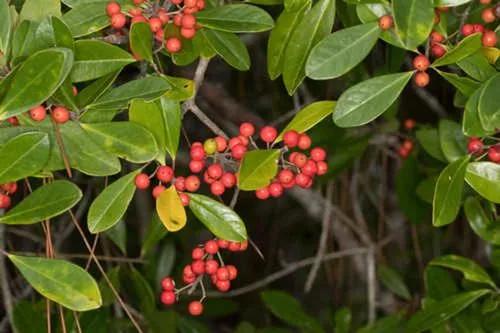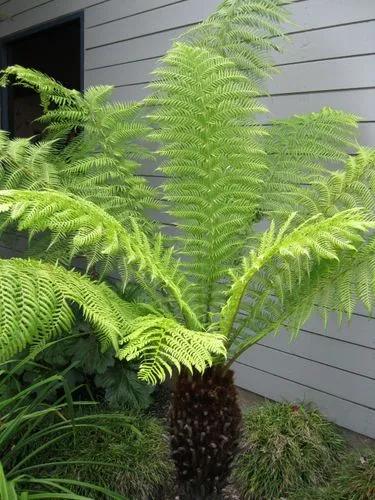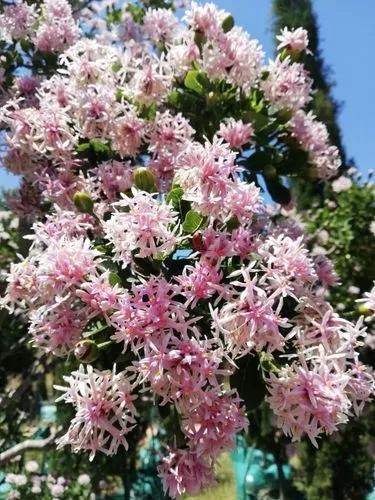Saman is a wide-canopied tree with a large symmetrical umbrella-shaped crown. It usually reaches a height of 15–25 m (49–82 ft) and a diameter of 30 m (98 ft).[4] The leaves fold in rainy weather and in the evening, hence the names rain tree and five o'clock tree ("Pukul Lima" in Malay). The tree has pinkish flowers with white and red stamens, set on heads with around 12–25 flowers per head. These heads may number in the thousands, covering the whole tree.[4] The seed pods of the tree contain sticky, edible flesh The tree, called Samán de Güere (transcribed Zamang del Guayre by von Humboldt) still stands today, and is a Venezuelan national treasure. Just like the dragon tree on Tenerife, the age of the saman in Venezuela is rather indeterminate. As von Humboldt's report makes clear, according to local tradition, it would be older than 500 years today, which is rather outstanding by the genus' standards. It is certain, however, the tree is quite more than 200 years old today, but it is one exceptional individual; even the well-learned von Humboldt could not believe it was actually the same species as the saman trees he knew from the greenhouses at Schönbrunn Castle.[10] A famous specimen called the "Brahmaputra Rain Tree" located at Guwahati on the banks of the Brahmaputra River in Assam, India has the thickest trunk of any Saman; approximately twelve feet (3.66 meters) diameter at breast height (DBH).[11] The size of the pollen is around 119 microns and it is polyad of 24 to 32 grains.
Rain Tree Care
Albizia Saman



Since its introduction to Cambodia, the Samanea saman is known locally as chankiri. It has been widely planted across the country thanks to its tall height and expansive branches that can shade large areas. Multiple chankiri can also be found in the Killing Fields, an execution field used during the Khmer Rouge, though the trees were planted at the field long before that use. During the Khmer Rouge, children and infants were smashed against trees because their parents were accused of crimes against the regime. It was so the children "wouldn't grow up and take revenge for their parents' deaths uring the production of the 1960 film Swiss Family Robinson, a Samanea saman tree in Tobago, said to be 60 metres (200 ft) tall, was used for the construction of the family's famous tree house. The set was left intact after filming but was destroyed by Hurricane Flora in 1963. The tree itself has survived and is located approximately 11°12′42.8″N 60°37′46.5″W near Goldsborough, Tobago. The figure for the tree's height comes from the motion picture company and has not been independently confirmed.
How to Care for the Plant

Popularity

27 people already have this plant 7 people have added this plant to their wishlists
Discover more plants with the list below
Popular articles






